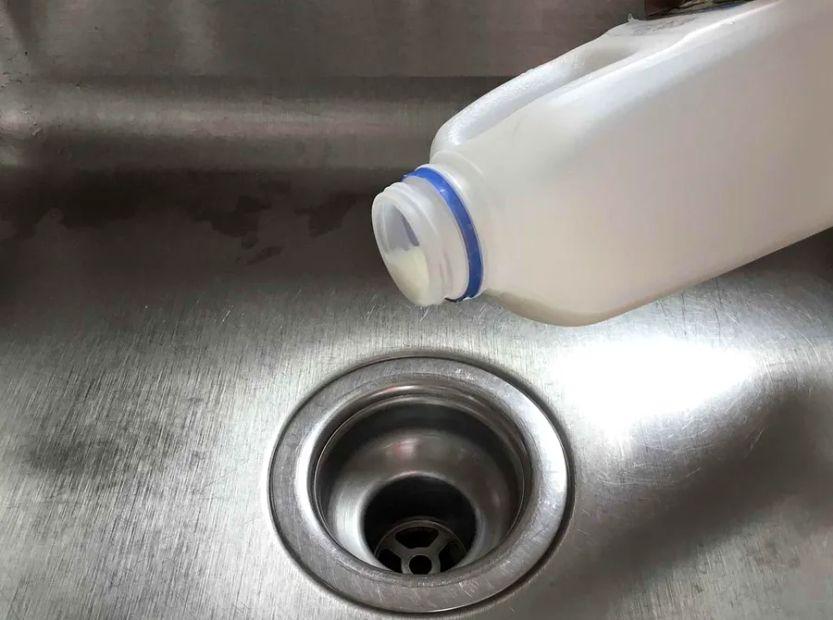What Is Sour Milk and Is It Safe to Use?

Understanding Sour Milk
Simply put, sour milk refers to milk with a tangy flavor, which can occur when milk begins to spoil naturally or is intentionally fermented or acidified to achieve this taste.
Sour Milk vs. Soured Milk
While the terms "sour milk" and "soured milk" are often used interchangeably, there's an important distinction. Soured milk is intentionally made sour, while sour milk naturally turns sour on its own.
Sour Milk vs. Spoiled Milk
It's important to remember that just because milk has passed its sell-by date, it doesn’t automatically mean it’s time to toss it. If properly stored in the fridge, milk can still be good for up to a week after the date on the carton.
Yes, Sour Milk Is Safe to Use
There’s a clear difference between sour milk that’s still safe to use and spoiled milk that has either gone past its prime or hasn’t been stored correctly. To determine whether your leftover milk is still good, rely on your senses—check for any unpleasant odor or taste. If it smells and tastes fine, it’s likely still safe. Slightly sour milk is still fine for consumption, but whether you find it palatable enough to use is up to you. It’s better suited for baking than for pouring on cereal.
But Spoiled Milk Is Another Matter...
All milk sold today, except raw milk, undergoes pasteurization. This process helps prevent serious diseases caused by bacterial infections, like tuberculosis and brucellosis. However, milk that has become overly sour, yellow, or lumpy—such as milk left out on a hot day—should be classified as spoiled, not just soured.
In addition to the unpleasant taste and odor, spoiled milk can lead to nausea, stomach cramps, or diarrhea. If you use spoiled milk in baking, the high oven temperature will kill most harmful bacteria, reducing the risk of illness. However, the baked goods may have an off flavor, so it might not be worth wasting good ingredients on a cake that tastes bad. When in doubt, it’s better to discard suspicious milk.

Different Types of Soured Milk
There are two types of soured milk: one made through fermentation and the other through acidification.
Fermented soured milk – such as cultured products like buttermilk and kefir – is made by introducing lactic acid bacteria (like lactobacillus) to pasteurized milk and incubating it at temperatures between 104 and 111°F for several hours. This process not only extends the product’s shelf life by slowing microbial growth but also enhances its taste and digestibility, as the bacteria break down lactose into acid. Fermented sour milk is more acidic (lower pH), has a tangier flavor, a thicker texture than regular milk, and contains less lactose. Different strains of lactic acid bacteria contribute unique flavors to each product.
There are many variations of soured milk products around the globe. In the Western world, cultured buttermilk is the most common, but other fermented dairy options include kefir, kumis, yogurt, and probiotic drinks like Yakult.
Acidified soured milk is made by adding an acid to pasteurized milk, which causes it to thicken and take on a tangy flavor. Unlike fermented milk, there are no lactic acid bacteria, no fermentation process, and no incubation. This method is simple and can easily be done at home.

How to Make Use of Sour Milk
Don’t throw out that milk that’s just a little sour — it can be put to good use in a variety of recipes:
Scones and Biscuits
Sour milk is perfect for scones and biscuits. When paired with baking soda, it acts as a leavening agent, giving them a subtle tang. Just remember, the recipe needs to include baking soda, not baking powder, since the latter already contains acid.
Pancakes
The same goes for pancakes: adding sour milk makes them lighter and fluffier. As with scones and biscuits, baking soda is essential for the sour milk to create the desired rise and texture.
Cakes and Muffins
If your cake or muffin recipe calls for buttermilk, sour milk can easily be used as a substitute. Just make sure your recipe includes baking soda for the right rise.
Sour Milk Alternatives
Buttermilk is a common ingredient in recipes, much more so than sour milk. However, as awareness of food waste grows and ingredient availability becomes more limited, this trend is shifting.
If you find yourself without buttermilk while baking or making pancakes, making a quick cup of homemade sour milk is an easy, cost-effective substitute. This works both ways: you can also replace sour milk with buttermilk in recipes that call for it.

Using Sour Milk in Recipes
Many recipes from the Depression era actually called for sour milk, as resources were limited and minimizing food waste was crucial. If you find yourself with leftover sour milk, consider trying these time-honored recipes:
- Waste Not Cake
- Sour Milk Spice Cake
- Aunt Mary's Chocolate Cake

1

2

3

4

5
Evaluation :
5/5